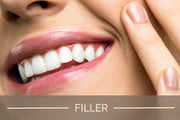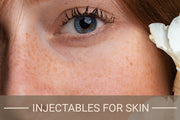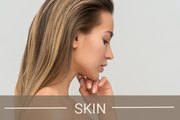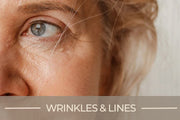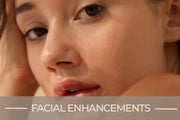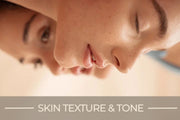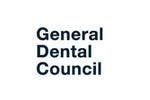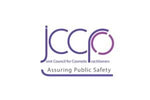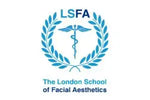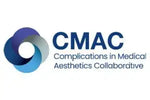General Questions about Botox Anti Wrinkle Injections
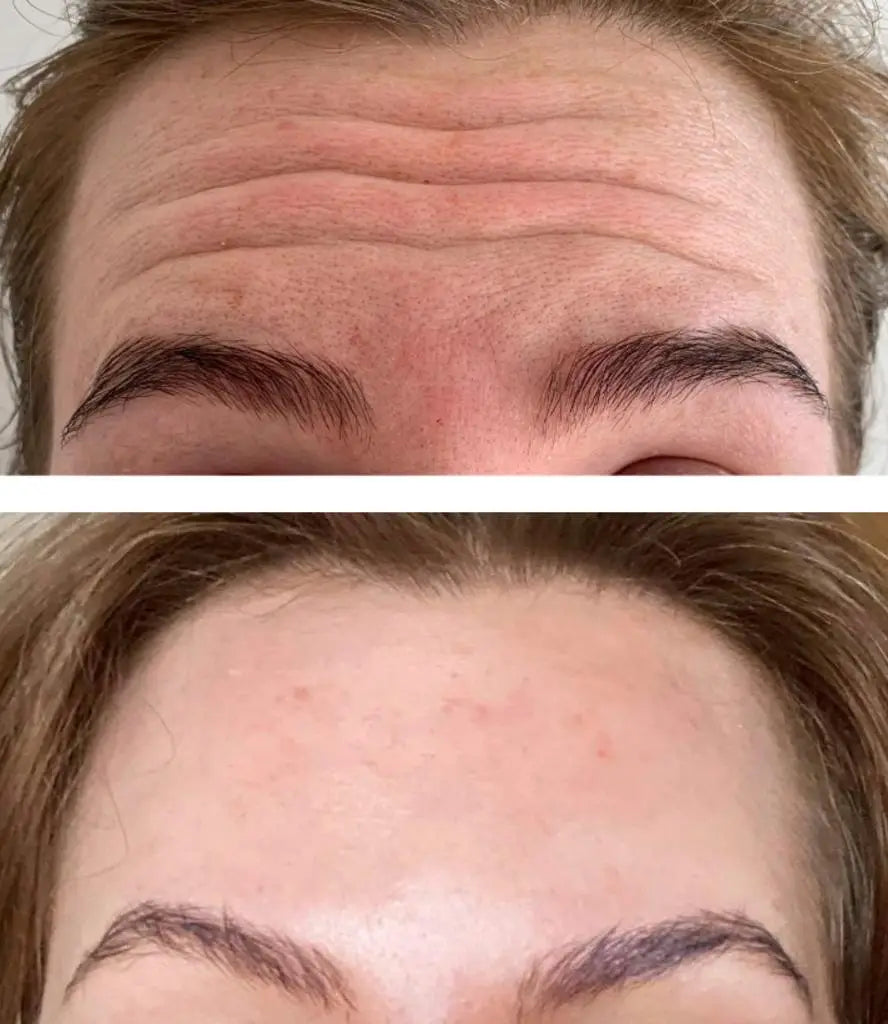
Content Verification

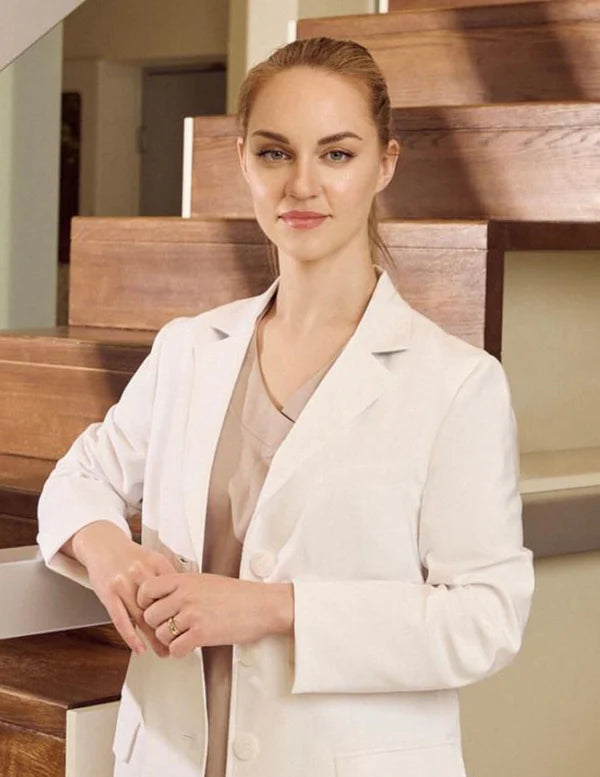

🔍 Quick Summary 🔍
- ✨ Botox helps reduce wrinkles by relaxing facial muscles.
- 💉 The procedure is quick, minimally invasive, and requires no downtime.
- ⏳ Results typically last 3-6 months, with regular top-ups recommended.
- 🤔 Choosing a qualified practitioner ensures safe and natural-looking results.
💡 Expert Advice & Tips 💡
- ✅ Always go to a medically trained professional for Botox injections.
- 🕒 Avoid strenuous exercise and alcohol for 24 hours post-treatment.
- 💦 Keep skin hydrated and use SPF to prolong results.
- 🚫 Don’t rub or massage the treated area for at least 24 hours.
- 📅 Book a follow-up appointment to assess your results.
Considering Botox Anti-Wrinkle Injections? You’re not alone. As one of the most popular anti-ageing treatments in the UK, Botox is widely trusted for reducing fine lines and wrinkles, helping you achieve a smoother, more youthful appearance. This guide will answer the most common questions about Botox treatments, from safety and side effects to cost and effectiveness. With expert insights from leading professionals, you’ll gain clear, accurate information to help you make an informed decision. By the end of this article, you’ll understand how Botox injections work, what to expect, and how to choose the right practitioner for safe, natural-looking results.
What is Botox, and How Does it Work?
Botox Injections are one of the most well-known anti-wrinkle treatments, commonly used to reduce fine lines and signs of ageing. Despite its popularity, many people are unsure how Botox works and how it differs from other cosmetic treatments like dermal fillers.
Botox is a form of Botulinum toxin type A, a purified protein that temporarily relaxes targeted muscles. It works by blocking nerve signals that cause muscle contractions, leading to smoother skin and a reduction in the appearance of wrinkles. As Dr. Laura Geige, Medical Director and Skin Expert from It’s Me & You Clinic, explains, “Botox treatments work by interrupting the communication between nerves and muscles, which prevents repetitive facial expressions from deepening lines over time. This effect is temporary but provides a visible softening of fine lines.”
The most common areas for Botox injections include:
- The forehead (to minimise horizontal lines caused by frequent eyebrow movement)
- Crow’s feet (the fine lines around the eyes caused by squinting and smiling)
- Frown lines (also known as glabellar lines, which appear between the eyebrows due to repeated frowning)
While Botox primarily targets dynamic wrinkles—those formed by muscle movement—dermal fillers work differently. Fillers, often made from hyaluronic acid, add volume to areas that have lost elasticity, such as the cheeks or lips. “People often confuse Botox with fillers, but they serve different purposes,” says Dr. Snieguole Geige, a Medical Doctor and Senior Adviser. “Botox prevents muscle movement to soften lines, whereas fillers restore lost volume and contour the face.”
Choosing between Botox Anti-Ageing Treatments and fillers depends on the individual’s concerns. Botox is more suitable for expression lines, while fillers are used to replace volume loss. Consulting a qualified practitioner can help determine the right treatment for your needs.
Is Botox Safe, and What Are the Common Side Effects?
When considering Botox treatments, safety is often one of the first concerns for potential patients. As a widely studied and regulated medical treatment, Botox injections are generally considered safe when administered by a qualified practitioner. However, like any medical procedure, there are possible side effects and factors to consider before treatment.
Dr. Laura Geige states, “Botox has a well-documented safety profile when performed by trained professionals. Most side effects are mild and temporary, but it’s essential for patients to be fully informed and consult with a qualified practitioner before proceeding.”
Common side effects of Botox anti-wrinkle injections are usually mild and resolve within a few days. These can include:
- Bruising around the injection site
- Headaches shortly after the procedure
- Mild swelling or redness in treated areas
In rare cases, patients may experience temporary muscle weakness in nearby areas, slight drooping of the eyelid (ptosis), or flu-like symptoms. While these effects are uncommon, they highlight the importance of choosing an experienced medical professional for your treatment.
Certain individuals should avoid Botox altogether. These include:
- Pregnant or breastfeeding women
- People with neuromuscular conditions such as myasthenia gravis or Lambert-Eaton syndrome
- Those who have previously experienced an allergic reaction to Botulinum toxin or any of its ingredients
As Dr. Snieguole Geige explains, “A thorough consultation is vital before undergoing Botox. A reputable practitioner will review your medical history and discuss any potential risks specific to your health.”
How Much Does Botox Cost in the UK?
The cost of Botox treatments in the UK can vary significantly depending on several factors. While many patients search for the most affordable option, it’s important to remember that cost often reflects the practitioner’s expertise, clinic reputation, and the quality of the treatment. Understanding what affects the price can help you make a well-informed decision.
Average Botox costs typically range from £150 to £350 per area treated. However, prices can fluctuate depending on your location. For example:
- In London, where demand is higher, prices often range from £200 to £400 per area due to the competitive market and the presence of highly experienced practitioners.
- In other major cities such as Manchester or Birmingham, the average cost is typically between £150 and £300.
- Smaller towns or clinics outside major urban centres may offer treatments starting at £100 to £250 per area.
Several factors influence the cost of Botox anti-wrinkle injections, including:
- Clinic reputation and location
- Practitioner expertise and qualifications
- The area being treated (e.g., forehead lines, crow’s feet, or frown lines)
- The amount of Botox required based on individual needs
As Dr. Giedre Narkiene, Dermatology Specialist, advises, “The cost of Botox should reflect the experience of the practitioner and the quality of care provided. It’s essential to prioritise safety and professionalism over finding the cheapest option.”
A common question many patients ask is whether more expensive Botox is better. While higher prices often reflect an experienced practitioner and a reputable clinic, this is not always the case. It’s crucial to research the practitioner’s qualifications and patient reviews rather than focusing solely on cost.
For those seeking budget-friendly Botox treatments in London, some clinics offer competitive rates without compromising safety. It’s recommended to verify the clinic’s credentials, ensure they are registered with relevant medical bodies, and always book a consultation before committing to treatment.
How Long Does a Botox Procedure Take?
One of the reasons Botox treatments are so popular is their convenience. Often referred to as a "lunchtime procedure," Botox injections are quick, minimally invasive, and require little to no downtime. For many, this makes it an ideal option for addressing wrinkles and fine lines without disrupting daily routines.
The typical procedure time for Botox anti-wrinkle injections is around 10 to 20 minutes. The exact duration can vary depending on the number of areas treated and the complexity of the procedure. For example, treating a single area such as frown lines between the eyebrows tends to be quicker, while addressing multiple zones—such as the forehead and crow’s feet—may take a little longer.
What to expect during a session:
- Consultation: Before the treatment begins, your practitioner will discuss your aesthetic goals and review your medical history. This step ensures you are a suitable candidate for the procedure.
- Preparation: The targeted areas will be cleaned, and in some cases, a topical numbing cream may be applied for added comfort, though most patients find the procedure tolerable without it.
- Injection Process: Using a fine needle, the practitioner will administer small amounts of Botox into specific facial muscles. Patients often describe the sensation as a mild pinch or sting.
Dr. Laura Geige notes, “Most patients are surprised by how quick and straightforward Botox injections are. The procedure is efficient and typically doesn’t require any anaesthesia, making it an easy addition to a busy schedule.”
Aftercare and recovery timeline:
- Immediate Post-Treatment: You may experience slight redness, swelling, or tenderness at the injection sites, but these symptoms typically subside within a few hours.
- First 24 Hours: Avoid rubbing or massaging the treated areas to prevent the Botox from migrating. It’s also best to avoid strenuous exercise and alcohol consumption during this time.
- Visible Results: Initial effects can usually be seen within 3 to 5 days, with full results becoming visible after 10 to 14 days.
As Dr. Snieguole Geige highlights, “Following proper aftercare is essential for achieving the best results. Simple precautions, such as avoiding lying down for several hours post-treatment, can help ensure the Botox settles effectively.”
What Qualifications Should I Look for in a Botox Practitioner?
Choosing a qualified professional for your Botox treatments is essential to ensure both safety and effectiveness. While Botox injections are considered non-surgical and minimally invasive, they are still a medical procedure that should only be performed by trained and certified professionals. Selecting the right practitioner significantly reduces the risk of complications and helps achieve natural-looking results.
The importance of choosing a qualified professional cannot be overstated. Botox anti-wrinkle injections require an in-depth understanding of facial anatomy, muscle structure, and injection techniques. An inexperienced or unlicensed practitioner increases the risk of side effects such as asymmetry, muscle weakness, or more serious complications.
When considering a provider, ensure they have the appropriate credentials, such as:
- Medical doctors (MDs or GPs) with specialist training in cosmetic procedures
- Dermatologists, who have extensive expertise in skin and facial treatments
- Dentists with additional qualifications in aesthetic medicine (particularly skilled in treating facial muscles)
As Dr. Giedre Narkiene explains, “A practitioner’s qualifications are crucial when considering Botox. Always ensure they are registered with a recognised medical body, such as the General Medical Council (GMC), and that they have extensive training in aesthetic procedures.”
In addition to checking qualifications, it’s important to know how to spot unsafe or unlicensed practitioners. Warning signs include:
- Lack of professional registration with relevant regulatory bodies (e.g., GMC, GDC, NMC)
- Offering treatments in non-clinical settings, such as home visits or informal spaces
- Unrealistically low prices that seem too good to be true
- Inability to provide clear answers regarding the procedure, risks, and aftercare
Dr. Rimas Geiga, Medical Doctor and Registered Dietician, advises, “Always do thorough research before undergoing any cosmetic procedure. A reputable practitioner will be transparent about their qualifications, explain potential risks, and conduct a detailed consultation beforehand.”
Why is My Botox Wearing Off After One Month?
Botox treatments are designed to provide temporary results, typically lasting between 3 to 6 months. However, some individuals may notice that their Botox injections appear to wear off sooner—sometimes within just a month. While this can be disappointing, several factors can influence how long your results last.
The average longevity of Botox varies based on individual response, the area treated, and the dosage used. For most people, the effects begin to appear within 3 to 5 days and reach their full potential after around two weeks. The results should last for several months before muscle activity gradually returns, and wrinkles begin to reappear.
There are several factors that can affect the duration of Botox results:
- Metabolism: Individuals with faster metabolic rates, often those who are very active, may process Botox more quickly, reducing the treatment's effectiveness duration.
- Lifestyle: High levels of physical activity, frequent sun exposure, smoking, and poor skincare habits can all contribute to shorter-lasting results.
- Injection technique: The skill of the practitioner plays a vital role. Incorrect injection depth or insufficient dosing can lead to faster breakdown of the toxin.
As Dr. Giedre Narkiene explains, “It’s not uncommon for first-time Botox users to notice results wearing off faster than expected. This can be due to muscle strength or the body’s natural response to the treatment. Consistent maintenance treatments can help prolong the effects over time.”
If your Botox anti-wrinkle injections are wearing off prematurely, there are several steps you can take to extend the results:
- Stick to a healthy skincare routine, using products that support skin hydration and repair.
- Avoid excessive sun exposure and always use a high-SPF sunscreen.
- Follow your practitioner’s aftercare advice carefully, especially in the first 24-48 hours after treatment.
- Consider scheduling regular maintenance treatments, as results tend to last longer with consistent use.
What If I Don’t Like My Botox?
While Botox treatments are generally safe and effective when performed by a qualified professional, some individuals may feel unsatisfied with their results. Whether it’s due to unnatural outcomes, asymmetry, or a feeling that the Botox injections didn’t meet your expectations, it’s important to know how to manage these situations.
Managing undesired results begins with patience. In many cases, mild swelling or unevenness right after treatment is temporary and will resolve within a few days. However, if you’re still unhappy after 2 weeks, when the Botox anti-wrinkle injections have fully settled, it’s time to consult your practitioner.
As Dr. Laura Geige advises, “If you’re dissatisfied with your Botox results, the first step is to speak with your practitioner. They can assess the outcome and, if necessary, adjust the treatment for a more balanced appearance.”
Many people wonder, can Botox be reversed? Unlike dermal fillers, Botox cannot be immediately dissolved. However, because it is a temporary treatment, the effects naturally wear off over time. Typically, this happens within 3 to 6 months. In some cases, additional injections can help balance any uneven results or reduce an overly frozen appearance by targeting different muscles.
To avoid botched Botox treatments altogether, it’s crucial to:
- Choose a qualified and experienced practitioner (registered with the General Medical Council or equivalent body).
- Schedule a consultation beforehand to discuss your goals and medical history.
- Start with a conservative dose, especially if it’s your first time receiving Botox for wrinkles.
- Ensure the treatment takes place in a clinical, sterile environment.
Dr. Snieguole Geige highlights, “Botched Botox often results from inexperienced practitioners or improper techniques. Taking the time to research your provider thoroughly can help prevent complications and ensure more natural, satisfactory results.”
Does Hyaluronic Acid Make Botox Wear Off Faster?
Many patients wonder whether certain skincare products, particularly hyaluronic acid, can interfere with the longevity of Botox treatments. As skincare routines have become more advanced and ingredient-focused, it’s natural to question how different products might affect the results of your Botox injections.
The good news is that hyaluronic acid does not make Botox wear off faster. In fact, it can complement your anti-wrinkle treatments by supporting skin hydration and improving overall skin texture. Hyaluronic acid is a naturally occurring substance in the skin that attracts and retains moisture, making it an excellent addition to a post-Botox skincare routine.
As Elisabeth Leclerc, Fashion Expert, explains, “Hyaluronic acid is a powerhouse ingredient for skin hydration and plumpness. While it doesn’t interfere with Botox, it can enhance the skin’s appearance, helping maintain a healthy, youthful glow alongside your anti-ageing treatments.”
To get the most out of your Botox anti-ageing treatments, it’s important to follow a skincare routine that supports long-lasting results. Here’s what to focus on:
- Hydration: Continue using hyaluronic acid serums to maintain skin moisture and elasticity. Well-hydrated skin often looks smoother and healthier, complementing the effects of Botox for wrinkles.
- Sun Protection: Use a broad-spectrum sunscreen with at least SPF 30 daily. UV damage can accelerate skin ageing and reduce the longevity of Botox treatments.
- Gentle Products: Avoid harsh exfoliants or active ingredients like retinol immediately after treatment, as they can irritate the skin.
- Antioxidants: Incorporate serums containing vitamin C or other antioxidants to protect against free radical damage.
While hyaluronic acid is safe to use alongside Botox injections, other products—such as retinoids—may need to be temporarily paused after treatment to avoid irritation.
Does Caffeine Affect Botox?
When preparing for Botox treatments, many patients are curious about lifestyle factors that could influence their results. One common question is whether caffeine affects Botox. While there’s no direct evidence that caffeine interferes with Botox injections or reduces their effectiveness, it can have some indirect effects on the treatment process and recovery.
Caffeine is a stimulant that can increase blood flow and elevate heart rate, which may lead to a higher risk of bruising and swelling after Botox treatments. Enhanced blood circulation can cause blood vessels to dilate, making the skin more prone to redness and tenderness around the injection sites.
Dr. Rimas Geiga explains, “While caffeine doesn’t reduce the effectiveness of Botox itself, it can increase the likelihood of minor side effects like bruising or swelling. Limiting caffeine intake before treatment may help minimise these risks and promote a smoother recovery.”
So, should you avoid coffee before or after Botox?
- It’s generally recommended to limit caffeine intake for at least 24 hours before your Botox appointment. This precaution helps reduce the risk of bruising and promotes a calmer treatment experience.
- After the treatment, it’s advisable to avoid caffeine for another 24 hours to support optimal recovery and minimise any potential swelling.
While cutting out caffeine entirely isn’t necessary, being mindful of your consumption can contribute to a more comfortable post-treatment experience. Staying hydrated with water and herbal teas is also recommended to support your body’s natural healing process.
What Happens If You Get Botox More Than Every 3 Months?
Botox treatments typically last between 3 to 6 months, depending on factors such as the treated area, individual metabolism, and lifestyle habits. However, some individuals may consider scheduling treatments more frequently in hopes of maintaining consistently smooth results. While this might seem appealing, receiving Botox injections too frequently can have unintended consequences.
One of the main risks of overusing Botox is the potential for muscle resistance. Over time, the targeted muscles may begin to weaken or stop responding effectively to the treatment, diminishing its overall effectiveness. Additionally, overuse can lead to unnatural results, such as a frozen or expressionless appearance, which many patients seek to avoid.
As Dr. Rimas Geiga explains, “Frequent Botox treatments—particularly those administered before the previous effects have worn off—can weaken the facial muscles more than intended. This may lead to unnatural facial expressions or, over time, reduced effectiveness of the injections.”
Receiving Botox injections more often than every three months can also lead to:
- Muscle atrophy: Prolonged muscle inactivity can cause the treated muscles to shrink and weaken over time.
- Increased risk of side effects: Frequent treatments may elevate the likelihood of complications such as drooping eyelids or facial asymmetry.
- Higher treatment costs: More frequent sessions can significantly increase the financial burden without offering additional benefits.
How frequent treatments impact long-term results:
For most individuals, sticking to a treatment schedule of every 3 to 4 months ensures the muscles have time to recover while maintaining the effectiveness of the Botox anti-wrinkle injections. Overusing Botox can result in diminishing returns, where the muscles no longer respond to the treatment as effectively as they once did.
To maximise the longevity of your results and maintain a natural appearance:
- Follow your practitioner’s recommended schedule based on your individual response to treatment.
- Allow the effects of your previous injections to wear off before seeking additional treatments.
- Discuss any concerns about the longevity of your results during follow-up appointments.
What Is Safer: Botox or Dermal Fillers?
When exploring anti-ageing treatments, many individuals weigh the benefits of Botox injections versus dermal fillers. While both are popular non-surgical procedures for enhancing facial aesthetics, they work in distinct ways and have different safety considerations. Understanding their differences can help you determine which treatment aligns best with your personal needs and goals.
How Does Botox Work?
Botox anti-wrinkle injections are primarily used to reduce dynamic wrinkles—those caused by repeated facial expressions such as frowning, smiling, or squinting. It works by temporarily relaxing targeted muscles, which softens the appearance of fine lines and prevents new wrinkles from forming. Common areas for Botox treatments include the forehead, crow’s feet, and frown lines between the eyebrows.
How Do Dermal Fillers Work?
Unlike Botox, dermal fillers focus on restoring lost volume rather than relaxing muscles. They are often composed of hyaluronic acid, a naturally occurring substance in the skin that helps retain moisture and plumpness. Fillers are commonly used to enhance the cheeks, lips, and jawline and to smooth out deep-set wrinkles that remain visible even when the face is at rest.
As Dr. Giedre Narkiene explains, “Botox and fillers serve different purposes. Botox is designed to target muscle-related wrinkles, while fillers focus on restoring volume and structure, making them ideal for different concerns.”
Which Treatment Lasts Longer?
- Botox typically lasts between 3 to 6 months, with results becoming visible within 3 to 5 days and reaching their full effect around two weeks after treatment.
- Dermal fillers can last anywhere from 6 to 18 months, depending on the type of filler used and the area treated. Results are usually immediate, though mild swelling and bruising may occur.
What Are the Risks of Botox vs Fillers?
Both treatments have minimal risks when performed by a trained professional, but it’s important to understand potential side effects:
- Botox injections may cause temporary bruising, swelling, or mild muscle weakness in nearby areas. In rare cases, improper injection placement can lead to slight eyelid drooping (ptosis), which typically resolves on its own.
- Dermal fillers carry a slightly higher risk of swelling, bruising, lump formation, or allergic reactions. However, if complications occur, hyaluronic acid fillers can be dissolved with an enzyme called hyaluronidase.
Which Treatment Is Right for You?
As Dr. Laura Geige advises, “The best treatment depends on your individual goals. If dynamic wrinkles from facial expressions are the main concern, Botox may be more appropriate. However, if you’re dealing with volume loss or deep-set lines, fillers can offer a more comprehensive solution.”
Ultimately, both Botox and dermal fillers are considered safe when administered by a medically trained professional. Choosing the right treatment requires a thorough consultation, during which your practitioner can assess your facial structure, discuss your aesthetic goals, and recommend a personalised approach.
The Bottom Line
Botox injections can be an effective solution for reducing wrinkles and achieving a refreshed appearance. Understanding the treatment process, potential side effects, and aftercare is essential for achieving the best results. Always consult a qualified medical professional before starting any anti-wrinkle treatments to ensure safety and suitability for your needs. By making informed decisions and following expert guidance, you can maximise the benefits of your Botox treatments and maintain a natural, youthful look.
Medical Disclaimer: This article is for informational purposes only and does not replace professional medical advice. Always consult a qualified practitioner before undergoing any Botox or anti-wrinkle treatments.
